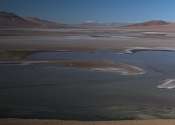ChemCam hits 1 million laser shots on Mars since 2012
The ChemCam instrument, developed at Los Alamos National Laboratory, recently zapped its laser for the 1 millionth time on Mars. Sitting on top of NASA's Curiosity rover, ChemCam has been helping make groundbreaking discoveries ...









